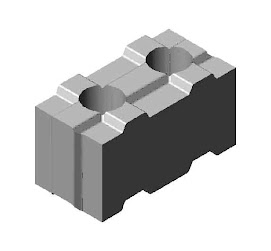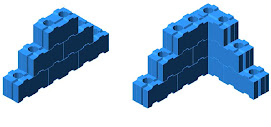More and more carpenters, kitchen and bathroom fitters, shop and interior designers, landscape gardeners and builders of decking and wood barns and are realising the need and benefits of coming off the drawing board and using a CAD system as their main design tool. The long term benefits are substantial in terms of time and cost and learning how to plan in some CAD packages is fairly easy for anyone in these business, especially those used to reading plans.
Some CAD programmes are exclusively 2D, but more and more these days clients want the ability to be able to view designs in 3D to get a clear idea of the finished look of the building and this is now possible with software costing about the same as a drawing board. It is also possible to photograph an existing interior, building or plot of land, import the picture into your computer, (this operation takes two minutes), and superimpose your revised design to present to the client. This level of technology, while easily learnt, gives any designer / builder an edge over rivals, especially if others are still relying on 2D drawings.
The first steps in putting the design together is no different on a computer than it is at the drawing board. There are a few lessons to be learnt, but for many packages this can take only a day and there is often on line or telephone help when stuck. The three big advantages to coming off the drawing board are firstly that mistakes and changes are easily corrected. Secondly, components used on a regular basis can be stored and simply dropped in, no need to re-draw each time. Thirdly, drawings can be electronically sent to clients, manufactures or possibly local authorities via the planning portal, for planning permission and comment.
Most designs, in all areas of construction, will need to be changed at some point to a greater or lesser degree. It may be the client changing their mind or the local authorities laying down restrictions. In the past this may have meant starting again with a new drawing but with a CAD drawing this is achieved painlessly by simply updating your drawing. Because it's easy to edit it is also easy to present the client with variations on a basic design without having to draw each one individually. Different colour combinations or wood finishes can be displayed with two clicks of the mouse and after a while being able to 'walk through' your proposed design will impress and win the contract.
It is important that the CAD system is able to read all the main file formats, as many as possible. As long as this is the case, swapping files with other companies and other designers is not a problem. It will also make reading Sketch Up files and building upon them possible. Being able to save as PDF will allow you to send designs to those without their own CAD package for approval or comment.
Once the fundamental skills are learnt designs will take a fraction of the time they used to, or if you've been paying an architect or CAD professional, will save you thousands of pounds in costs.
The more you use CAD the more you learn and the more possibilities start to open up. Large material libraries are available to be imposed on a surface with a click of the mouse. Bricks can be laid as Stretcher, Common, Flemish, English, Stack and Rowlock. Wood grains can be opened up, changed direction or colour and there are metals marbles, stones, textiles, wood flooring etc, etc. Furniture, either inside or garden, can be downloaded free and inserted into your design to give a more realistic look. Lighting can be changed to create shadows to add a bit of drama to the finished visualisation and - it becomes fun.
JO & ASSOCIATES
Consultant - Contractor - Interior - Producer of "BATA INTERLOK"
contact us:
Email: antonjo@bdg.centrin.net.id
Phone/Fax: +62-22-5419698
HP: +62-22-76692727 or +62-8122387982
contact us:
Email: antonjo@bdg.centrin.net.id
Phone/Fax: +62-22-5419698
HP: +62-22-76692727 or +62-8122387982
4.9.08
Interior Design by Paul Tracey
FOR SITE AT INDONESIA COUNTRY ONLY
DESIGN AND BUILD
for structural, architectural and interior.
Our email address: antonjo@bdg.centrin.net.id
for structural, architectural and interior.
Our email address: antonjo@bdg.centrin.net.id








